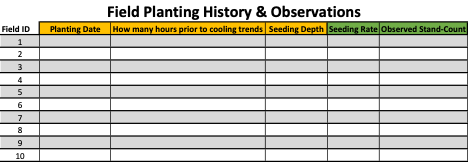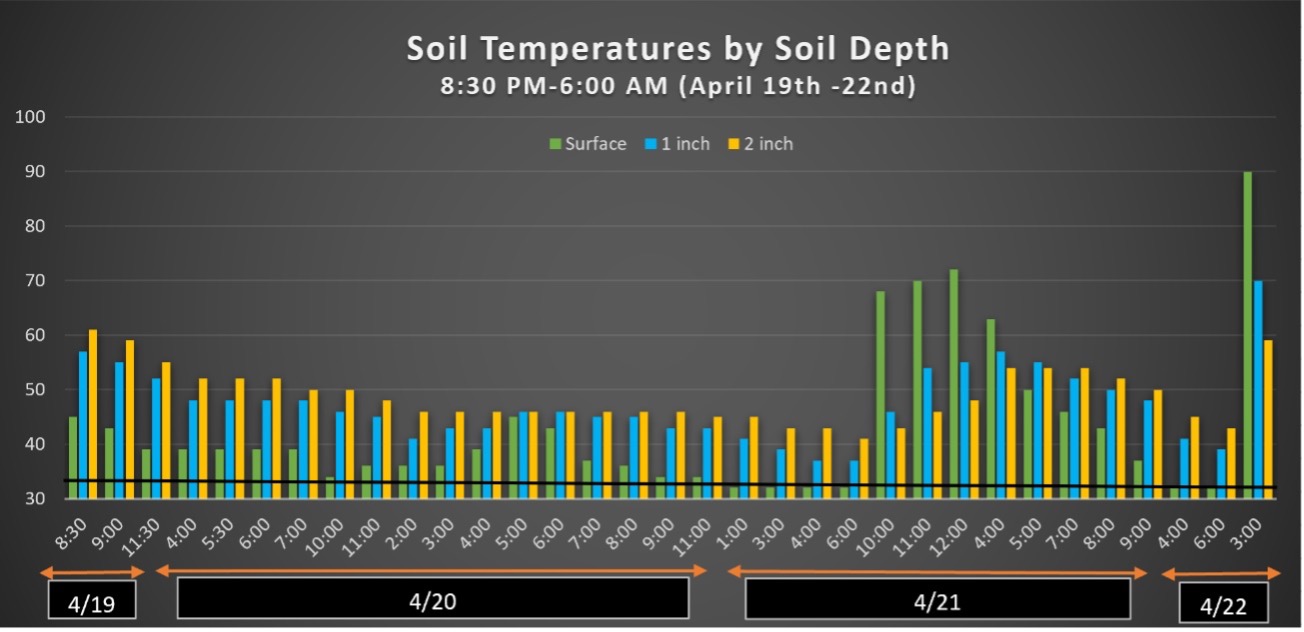I am sure most of our readers have been in a situation where they have called their seed rep or agronomist and told them that they’re concerned about seeds not coming up due to recent, challenging, environmental events. You may feel like they are trying to play a 100-question game with you, but in fact, they are trying to collect as much information as they can to help make the best recommendation they can. It’s often said that the famous last words of an agronomist are “it depends,” and how true this is.
“Will my beans/corn live?”
“It depends.”
It seems like in production agriculture the answer is rarely black and white because there are so many variables that can influence the outcome. So, before you make the call to your seed rep or agronomist, consider using the chart below and take some pre-call notes to help provide as much information as you can.

Planting date?
This information will help to understand any environmental events that took place since planting and to better understand which event may have caused the problem.
How many hours prior to cooling trends?
This information will help to understand how much time has passed since planting and the cooling trend of the soils.
Seeding depth?
Soil is a great insolate to hold heat against cool temperatures. However, the closer a seed is planted to the soil surface, the more exposed or vulnerable it is to the air temperature and the elements, such as rain or frost. The chart below shows how the soil temperature can vary from the surface, one to two inches or time (hours and days) during challenging weather events that took place during April 19-April 22, 2021 (cool temperatures, snow and frost).

As we have learned from recent soil temperature observation (see above chart) soils can be a great insulator against cool temperatures if it’s one to two inches deep. The surface and less than one inch will fluctuate more aggressively to the outside temperature. This can be influenced by sunlight +/-, rain, air temperatures (frost). They say a plant needs to have a good first drink, referring to the temperature quality that the corn or soybean seed will imbibe or take in. If the moisture is cool to cold, it will have a greater impact on the seed and seedling development or radical (corn/soy) mesocotyl (corn) and hypocotyl (soy). Both soybeans and corn need to imbibe a certain percentage of its seed weight of water to initiate the germination process. The process can be impacted by the seed to soil contact. Poor seed to soil contact will have less touch points to transfer water from the soil into the seed. Good seed to soil contact will require less time to transfer the desired volume of water (If supply is equal). The heat of the soil will also be exchanged from the soil to the seed and will be impacted by the quality of the seed to soil contact.
Corn
Corn plants need to emerge within 72 hours of each other, otherwise later emerged plants will have a smaller root system, smaller stalk, smaller ear with less kernels, and less total weight per ear. When talking about stand counts, do not just count physical plant. Count consistent viable plants that will add to yield. For example, Purdue Agronomy Handbooks suggest that with a final stand count of 24,000 planted on April 30, one could still expect potentially 97 percent of optimum yield. If you decide to keep a lower population, it means that each viable plant must produce more then you originally asked it to, but are you willing to manage it accordingly? Make sure to effectively manage the supply of nitrogen through grain fill and protect the canopy from R1-Black Layer.
Soybeans
A soybean plant can handle the cool, wet, early soil condition better than a corn plant. Based on the above information, a corn stands at 24,000 has a population can still yield adequately and most planting population are trending upwards, so most corn growers are probably safe if they lose some population. Soybean populations are naturally trending lower. Therefore, it’s not recommended to have a starting planting population too low when you know you are planting into challenging environmental conditions. However, we know that lower stand counts on soybean can still yield very respectably. If you’re doing stand counts and finding them to be lower than ideal, it’s important to consider that with a lower stand a field may struggle to produce a timely canopy. This is where it’s going to be very important to scout, spray early, and use a residual with post application.




 and then
and then